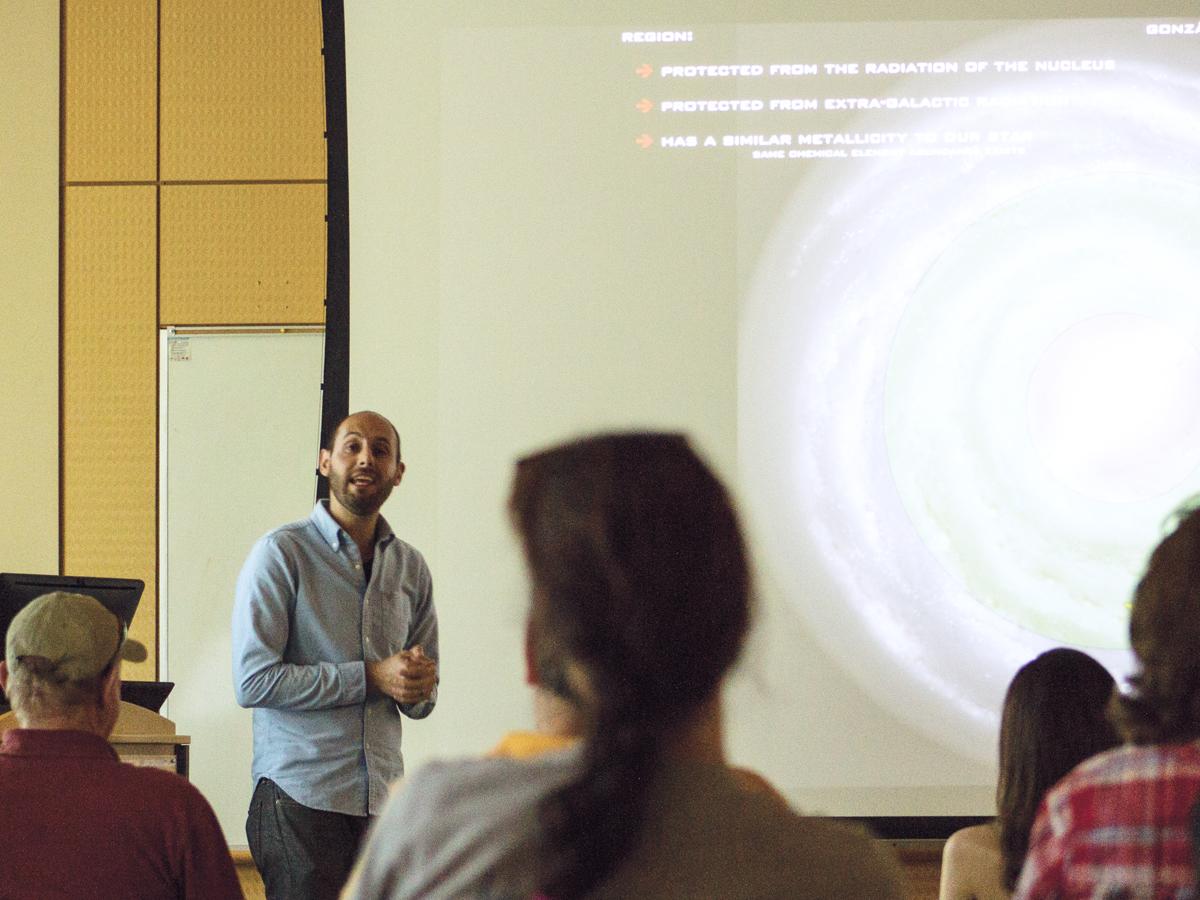
UCR postdoctoral physics and astronomy scholar Leo Winkler gave a presentation discussing potential extraterrestrial life, civilizations and the possibility of communicating with them last Thursday. The two-hour lecture was given in Room 206 of Winston Chung Hall to a crowd of approximately 20 people, mostly graduate students.
Winkler discussed the origins of Earth and the diversity of its ecosystems, which allow different species and small life forms such as bacteria to flourish. Scientists have discovered that many organisms, particularly bacteria, have been capable of surviving in extreme conditions on Earth ranging from temperatures below 15 degrees Celsius and above 120 degrees Celsius, as well as extreme pressures and conditions with high salinity.
“There are organisms that can live and feed in temperatures above 167 degrees Fahrenheit, which is above the temperature to boil water which we usually use to sterilize,” Winkler explained.
Winkler reasoned that the ability for life to be able to live on Earth in extreme conditions opens up the possibility for organisms to live in similar conditions outside the planet as well. On Jupiter’s moon Europa, for example, the slush on the moon along with its liquid oceans show that the core is still warm, which would allow for hyperthermophiles — organisms that live in extremely hot conditions — to live by the hydrothermal vents near the moon’s core.
After the analysis, Winkler spoke about the possibility of intelligent life and civilizations. He began by borrowing a quote from Carl Sagan, who stated that intelligent life is “capable of communicating with individuals very different from themselves with the interest in doing so.”
To calculate the number of other potential civilizations in our galaxy, Winkler used the Drake equation, which multiplies the average lifetime of civilizations on our planet by years, specific star formations which allow life to exist and known planets that can potentially support and develop life. After using data currently known by scientists about planets and stars in our galaxy, Winkler concluded that there are as many as 2,940 civilizations that humans could communicate with in our galaxy.
With this possibility, Winkler explained that using radio signals would be the best way to establish communication with other intelligent life rather than trying direct contact. “The reason we cannot contact them directly is that distances in our galaxies are huge,” Winkler explained, citing that it would take thousands of years to travel such large distances in the fastest object that is currently available, the New Horizons spacecraft, and that wormholes and black holes pose too much of a risk.
His discussion later described current and previous messages sent, such as the Arecibo binary code developed by Frank Drake, which Winkler joked that the extraterrestrials “would need an IQ of over 300 in order to understand.”
While scientists have not picked up any responses from intelligent life, Winkler said that interest in extraterrestrial life has created advancements in various fields. Disciplines affected range from engineering, which allowed for the creation of the New Horizons spacecraft, and philosophy, which raises questions about the best course of action if contact were to be established. “We shouldn’t come to error of the conclusion that we are the only life in the universe,” Winkler concluded.
Mike Phillips, a graduate student of materials, science and engineering, asked Winkler about the possibility of extraterrestrials contacting Earth directly. “I have seen a lot of movies,” Winkler joked, adding that scientists such as Stephen Hawking and Elon Musk have been skeptical of sending information into space as evolution shows that predators are usually the dominant creatures.
Phillips said after the meeting that as a student outside of astronomy, “The presentation covered a lot of ground and was very linear, allowing those without a background in the subject to understand. I appreciate that.”
This lecture is part of a series of astronomy lectures hosted by UCR’s physics and astronomy departments. The next lecture will be on April 24 to celebrate the 25th anniversary of the Hubble Space Telescope.








